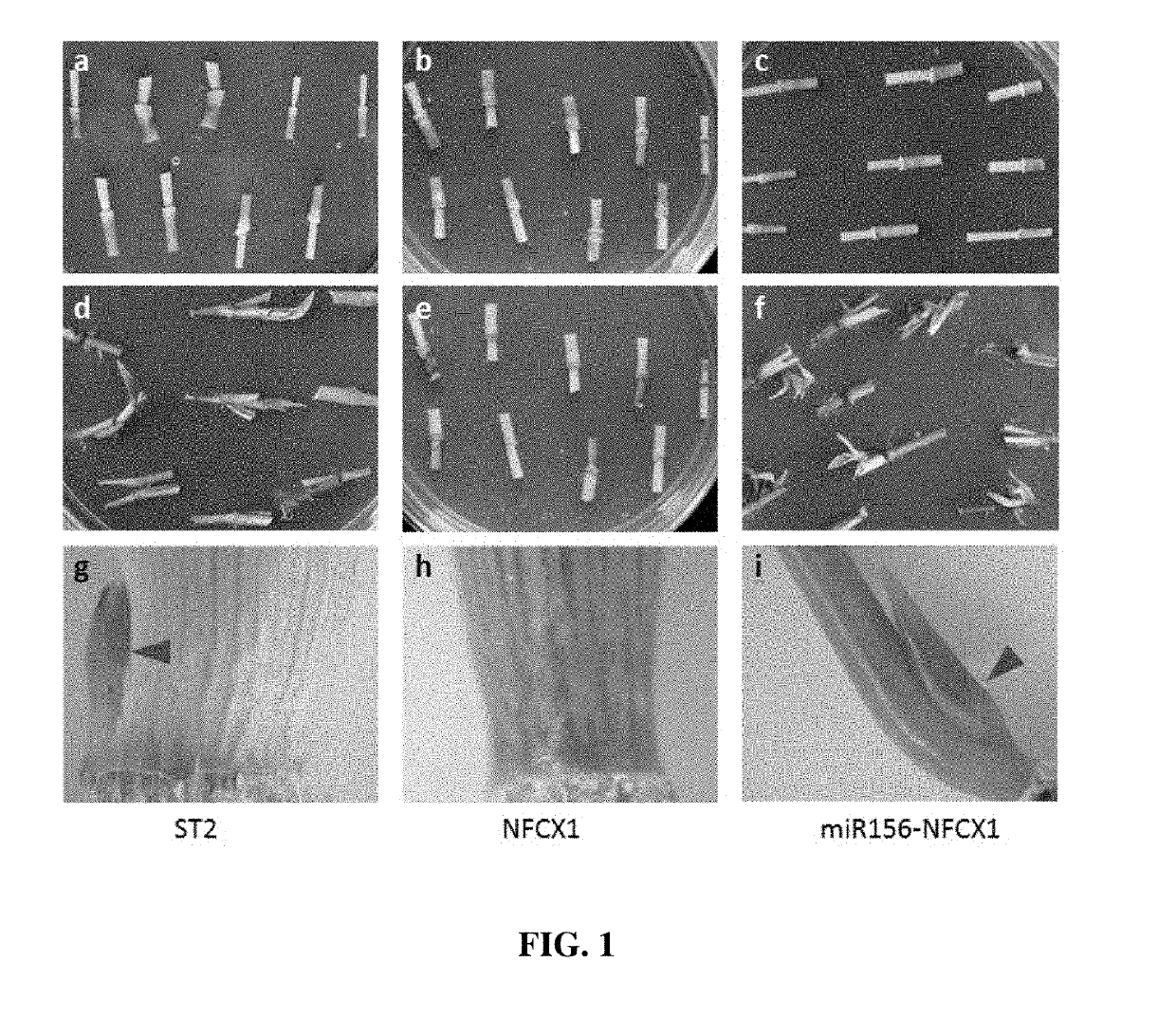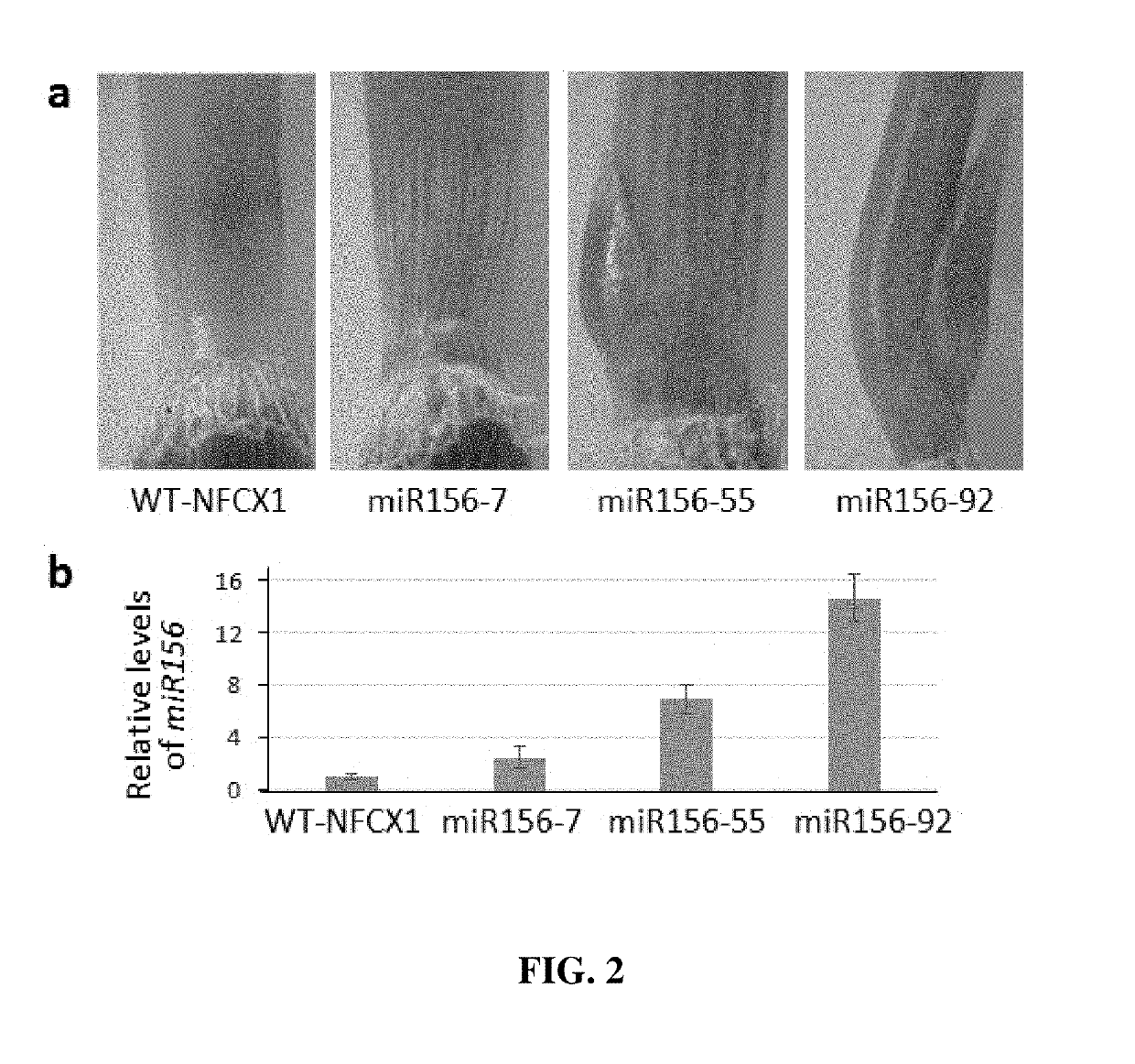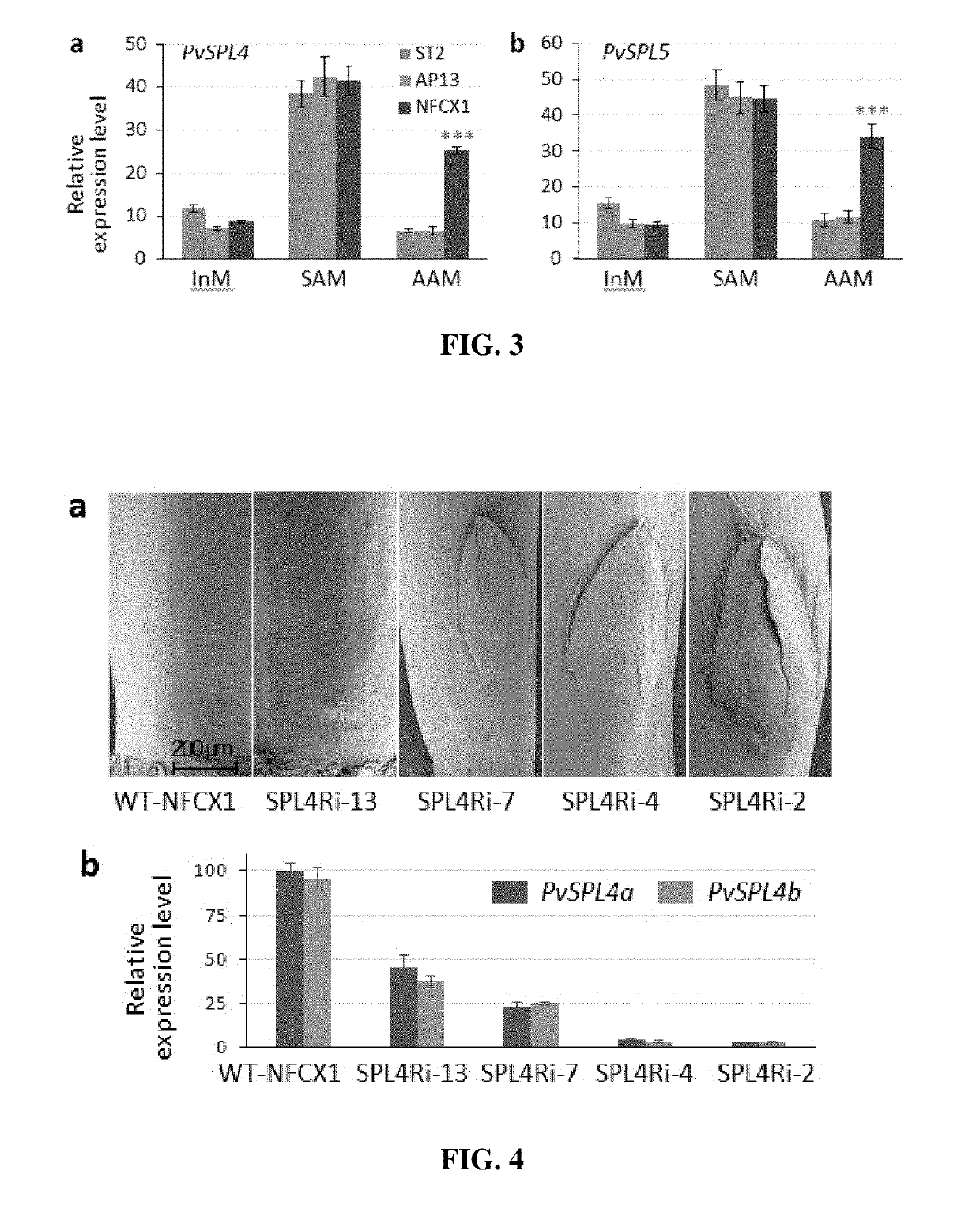Methods and compositions for regulation of plant growth
- Summary
- Abstract
- Description
- Claims
- Application Information
AI Technical Summary
Benefits of technology
Problems solved by technology
Method used
Image
Examples
example 1
Plant Materials and Growth Conditions.
[0153]All genotypes (AP13, ST2 and NFCX1) applied in the present Examples are derived from lowland-type switchgrass cultivar Alamo (2n=4x=36). Plants were grown in the greenhouse at 26° C. with 16 h light (390 μE·m−2·s−1). The identification of switchgrass development stages and sample harvesting followed the criteria described by Hardin et al., 2013.
example 2
Gene Constructs and Transformation.
[0154]miR156 overexpression transgenic lines were created by applying the previously described OsmiR156b construct (Fu, et al., 2012) to transform genotype NFCX1 following the established protocol (Fu, et al., Proc. Natl. Acad. Sci. USA 108:3803-3808, 2011).
[0155]Based on the EST sequences, the full length mRNA sequences of PvSPL4a and 4b were isolated by 5′- and 3′-RACE following protocols from the manufacturer (Invitrogen). To knockdown PvSPL4, an RNAi binary vector was constructed using the pANIC12A gateway vector (Mann, et al., Plant Biotechnol. J. 10:226-236, 2012). A 443-bp SPL4 cDNA fragment selected from the conserved domain was amplified by PCR and cloned into the pANIC12A vector. The verified construct was used to transform NFCX1.
example 3
Gene Expression Quantification.
[0156]Quantitative RT-PCR was performed to analyze transcript abundance of various genes. Total RNA was extracted from various tissues by Tri-Reagent (Invitrogen) and subjected to reverse transcription with Superscript Kit (Invitrogen). SYBR Green (Applied Biosystems, Foster City, Calif.) was used as the reporter dye. Ubq1 transcripts (GenBank accession number: FL899020) were used as an internal control.
[0157]The mature miR156 level was quantified by using stem-loop RT-PCR procedure (Cui, et al., Plant J. 80:1108-1117, 2014).
PUM
 Login to View More
Login to View More Abstract
Description
Claims
Application Information
 Login to View More
Login to View More - R&D
- Intellectual Property
- Life Sciences
- Materials
- Tech Scout
- Unparalleled Data Quality
- Higher Quality Content
- 60% Fewer Hallucinations
Browse by: Latest US Patents, China's latest patents, Technical Efficacy Thesaurus, Application Domain, Technology Topic, Popular Technical Reports.
© 2025 PatSnap. All rights reserved.Legal|Privacy policy|Modern Slavery Act Transparency Statement|Sitemap|About US| Contact US: help@patsnap.com



